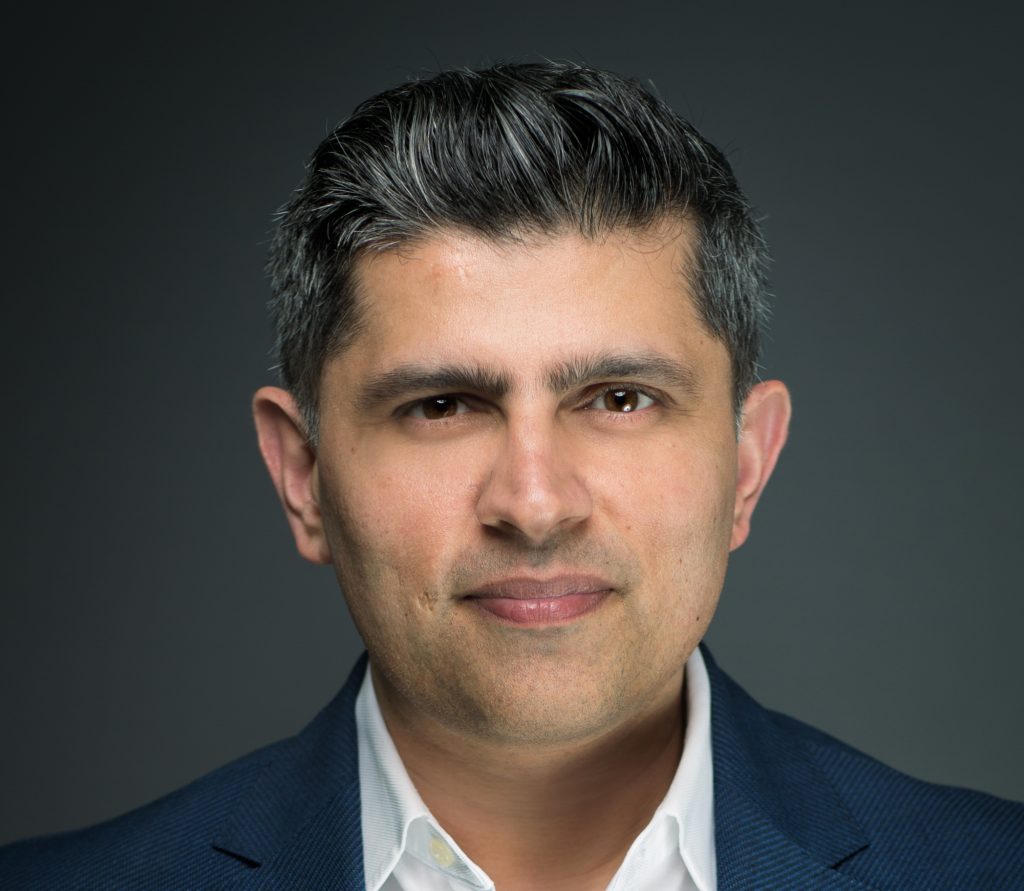Network security is a vital capability that enables the business to evolve through digital innovation – an effective strategy with every organisation across multiple industries. Building a cyber resilient strategy is important to build trust with customers, partners and the whole supply chain. Industry pundits share insights on why CIOs and IT teams need to prioritise network security now more than ever.

In IT, network security is the act of maintaining the integrity of a computer network and the data within it. A network is comprised of any number and variety of interconnected devices. Network security is important because it keeps sensitive data safe from cyberattacks and ensures that the network is usable and can be trusted.
Network security management may involve a wide variety of security tools, for both hardware and software. Security becomes more important as networks become more complex, and enterprises become more reliant on their networks and data to conduct business.
Ian Engelbrecht, Veeam Systems Engineering Manager – Africa, Veeam Software, said security, in general, is a key business topic and concern. According to Engelbrecht, in 2021, cyberattacks increased to every 11 seconds, from 120 seconds the year prior, with the global cost amounting to US$20 billion in 2021. “Security has become a crucial topic in driving solutions into the market. The cybersecurity market is projected to grow from US$16.1 billion in 2020 to US$28.7 billion by 2025,” he said. “Shodan.io keeps track of all devices that are directly accessible from the Internet. It reveals there are 513,615 exposed devices across the UAE vulnerable to cybercrime incidents.”
Engelbrecht said this demonstrates why cybersecurity and resilience are important for all organisations across the Middle East and Africa (MEA), not just enterprises. “The US$20 billion global cost of ransomware doesn’t just include data ransoms paid, but reputational damage and downtime too,” he said. “Homeworking has increased customers’ demands too, with them expecting 24 by 7 by 365 availability of a platform or service. With a huge increase in e-commerce driven businesses, it takes a matter of seconds for a consumer to decide which platform to consume or purchase from. If company A (who the customers prefer to use) is offline at the time, and they would like to buy their favourite football jersey at 10pm, the sale will go to company B.”
Haider Pasha, Chief Security Officer, Palo Alto Networks, MEA, said network security is a vital capability that enables the business to evolve through digital innovation – an effective strategy with every organisation across multiple industries. Pasha said when building a cyber resilient strategy, it is important to build trust with customers, partners and the whole supply chain. “The integrity of any organisation’s cyber posture serves as a competitive advantage and ensures that the company involved is not just protecting the business but empowering it,” he said.
Emad Fahmy, Systems Engineering Manager, Middle East, NETSCOUT, saidnetwork security and integrity have become key topics within the enterprise segment as companies would instead safeguard their networks against potential risks rather than clean up the damage afterward.
“CIOs and their IT teams must emphasise robust cybersecurity best practices to design a secure network. The best practices include educating users on proper cybersecurity hygiene and employing network and endpoint cybersecurity protection solutions to detect malware, anomalous activity or indicators of compromise,” he said. “These solutions and cyber hygiene practices must not be limited to the office space only. The new normal is inclusive of hybrid and remote working policies, thus leaving the network at more significant risk.”
According to Fahmy, companies must also prioritise the use of reliable DDoS mitigation methods. “Given that network security is an umbrella term that includes various subsections, there are four common challenges that CIOs run into when designing their network security, including the increasing sophistication of cyberthreat tools and the gap in knowledge faced by IT teams of the looming threats and needed solutions,” he said. “This is combined with a second challenge; the complexity of network security technology, as there is a need for an increasing number of tools to fight off the different threats. Another challenge is the expanding attack surface. The increase in Internet of Things (IoT) devices connecting to unsafe networks and cloud applications have led to a more vulnerable environment to protect. Finally, poorly designed network security has been attributed to the ongoing cybersecurity skills shortage as the scope and complexity of the required measures overwhelms the understaffed department.”
For CIOs to select the best tools in the market, they must keep in mind a few key factors affecting their decision, including the optimisation of the security solution, its efficiency, the level of visibility provided, and the professional services assistance offered by the service provider.
Maher Jadallah, Senior Director Middle East and North Africa (MENA), Tenable, said the pandemic opened the door for multiple forms of attack as organisations’ attack surfaces expanded far beyond office walls, to home office networks, personal devices, the cloud and third-party partners. The result said Jadallah is that shared corporate networks are more vulnerable than ever and can be accessed easily with only one connected device being compromised.
“Now, companies need to make foundational investments to ensure long-term protection from bad actors. Shortcuts and addressing individual problems will not stand a chance against growing and evolving cyberthreats, but businesses can stay ahead of the cyberattack curve by investing and sustaining cyber solutions,” he said.
He explained that organisations need to be able to determine what vulnerabilities exist within their entire infrastructure – both IT and OT, affecting which assets. “In addition, they need to be able to prioritise the vulnerabilities that pose a real, versus theoretical risk – so those that are being actively exploited. This intelligence allows them to focus efforts on those vulnerabilities that matter and fix these first. When we think of traditional network security, the premise is to fortify the perimeter. The aim is to prevent threats outside of the network from getting in. The downside is that, once users or bad actors clear the perimeter, they are free to move about the network, taking whatever, they find with them as they leave,” he added.
Traditional perimeter security simply isn’t enough to protect multiple environments against today’s cybercriminals. Instead, IT and security teams need to adopt a model in which nothing – no device, person, or action – is inherently trusted.
Pasha said CIOs along with their IT teams need to think in a Zero Trust strategic mindset and focus on understanding where the crown jewels are and what is critical to the business. He said with that understanding they can build a cyber response strategy should those crown jewels come under attack and ensure they have full visibility and ability to respond to every malicious incident they see.

“As an organisation’s data moves beyond the traditional organisational boundary, CIOs and IT teams must first identify where the resources are (data, applications, assets, and services). Network Security today has no boundary. Organisations should focus on cloud, endpoint and the traditional on-premise network as the areas to secure, and tools such as next-gen firewalls, cloud security, endpoints, etc. should be automated, simple to deploy and use and above all else, easy to integrate,” he added. “They should be used as a singular platform vs point vendors or tools creating more complexity and fragmentation in the network which will eventually lead to complexity. Generally, selecting the best tool often means you should determine how easily it can integrate in your overall platform. A tool can be very strong, but if it doesn’t report, orchestrate defence or share threat intelligence with your other network security tools, it becomes its own silo and therefore has to be managed separately which takes up more resources.”
Pasha said some common mistakes generally that CIOs and their teams make include picking point products and not focusing on the whole security platform, or not clearly understanding where the crown jewels of the organisation are and how they share data and are reliant on the rest of the network. “CIOs when designing their network security at times do not follow best practice standard to secure the environment such as NIST, CIS, ISO amongst many. In addition, it is essential to have a clear roadmap for transformation – often CIOs build an IT strategy without keeping cybersecurity in mind from the beginning. It is recommended to use zero trust and an automated security operations centre to support the cyber security programme,” he said.
Pasha pointed out that organisations should focus on a cyber resilient framework which looks at the organisational culture, policy, process, strategy and the technology critical to building it. “It is advised to have consistent penetration tests to understand the gaps, both from an internal and external points of view. My recommendation is to rotate the penetration test partners every year to get differing points of view,” he said. “Moreover, organisations using an attack surface management capability which gives a real-time attacker point of view is important, as well as building a highly autonomous security operations centre to catch malicious behaviour in real-time.”

According to Tenable’s Jadallah, going forward, the focus must also be placed on securing accounts – employees, service contractors, temporary workers, systems accounts and others – and their access to and permissions across systems. “The old adage, that the best defence is an offence, stands true in cyber. The more you can prepare and harden systems, it will help reduce the business risk from cyberthreats,” he said.


